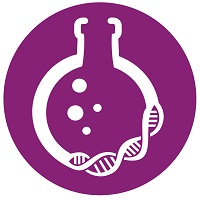Bioanalytics
Symposium: Novel Instrumentations in Bioanalysis
Advancing High-Resolution Ion Mobility-Mass Spectrometry for Bioanalysis and Drug Applications
Wednesday, November 12, 2025
10:00 AM - 10:30 AM CT
Location: 221 CD

Christopher D. Chouinard, PhD
Assistant Professor
Clemson University
Clemson, South Carolina
Speaker(s)
Liquid chromatography-high-resolution tandem mass spectrometry (LC-HRMS/MS) is the gold standard for confident identification and quantification of therapeutics, illicit drugs, and their biological metabolites. Nevertheless, challenges in differentiation of structurally similar compounds, especially isomers, preclude truly global and comprehensive analyses. Ion mobility-mass spectrometry (IM-MS) has recently come into focus due to its rapid, gas-phase separations capable of resolving even stereochemical differences. More importantly, technological innovations (i.e., hardware and software advances) have progressed IM beyond the bounds of traditional resolving power (Rp ~50-60) to high-resolution techniques (Rp); such approaches have included new instrumentation such as Structures for Lossless Ion Manipulations (SLIM), recently commercialized by MOBILion Systems, and data post-processing approaches like Agilent’s High-Resolution demultiplexing tool (HRdm 2.0). Furthermore, targeted chemical approaches (i.e., derivatization reactions) have also shown promise for improving resolution between stereoisomers. This presentation will overview the state-of-the-art in high-resolution ion mobility (HRIM) separations for several drug applications including differentiating drug atropisomers and characterizing oligonucleotide therapeutics.
Learning Objectives:
- Upon completion, participants will be able to describe the basic operating principles of ion mobility-mass spectrometry (IM-MS) and the advantages of high-resolution ion mobility (HRIM).
- Upon completion, participants will be able to demonstrate how ion mobility-mass spectrometry (IM-MS) can be applied to separation of challenging drug isomers.
- Upon completion, participants will be able to describe how ion mobility-mass spectrometry (IM-MS) can improve both throughput and quantification of drug compounds in complex mixtures.

